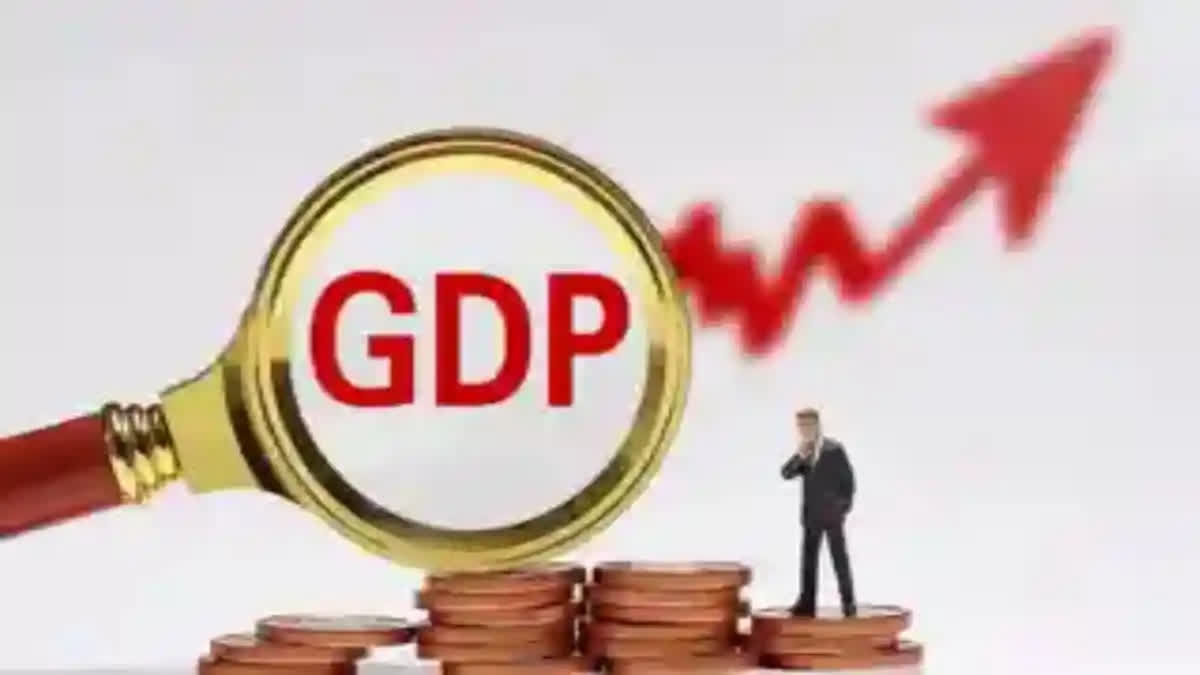New Delhi:It is more than two weeks of farmers’ protest from two major cultivating states who are demanding a legal guarantee of a minimum procurement price for their produce ahead of crucial national elections in April-May this year.
In such a time, a report by the SBI Research released Wednesday has brought the spotlight on the sluggish performance of the country's farm sector which is expected to slow down India’s economic growth in the third quarter of the current financial year. The report estimates that India’s quarterly GDP growth will decline to 6.8 percent during October-December period last year from a high of 7.8 percent and 7.6 percent recorded during the first and second quarters of the current financial year.
As a result, the SBI Research estimates that India’s annual GDP growth rate would come at around 7.3 percent this year. Quoting from the First Advance Estimates of the GDP growth, the report said that the estimated production of major Kharif crops for 2023-24 is 148.5 MMT, which is a decline of 4.6 percent from the last financial year.
Though the sowing season for Rabi crops concluded on 23 February, it indicated a slight increase in overall acreage compared to the previous year. However, concerns are there over the sown area under cereals, which saw a decline of 6.5 percent from the previous year.
Soumya Kanti Ghosh, Group Chief Economic Adviser of India’s largest lender State Bank of India said the agriculture may see some moderation if the Rabi out-put does not offset the Kharif shortfall. “Value added in agriculture will decline,” Ghosh said in a statement sent to ETV Bharat. Though the farm sector accounts for only 15 percent of India’s total annual GDP, it is a crucial source of livelihood for the bulk of India’s rural population.
Global headwinds pose risk to growth
There is another risk to the country’s GDP growth as some of the major advanced economies such as the UK and Japan are expected to slip into recession. The report said that the likelihood of the global economy exhibiting stronger than expected growth in 2024 has brightened in recent months, with risks broadly balanced. “Faster disinflation, continued fiscal support and improvements in productivity are expected to buffer against geopolitical tensions and supply disruptions.”
Although, the International Monetary Fund (IMF) has upgraded its growth for global forecast for both 2024 and 2025 at 3.1 percent and 3.2 percent in its Global Economic Outlook of January this year but the global complexities such as protracted Russia-Ukraine war and Israel-Hamas conflict continue to pose challenge to global economic outlook. India has already recorded a negative growth in the country’s exports in January this year.
Europe Factor
According to GHosh, the situation is further exacerbated by Germany’s Bundesbank hinting at stress factors driving the beleaguered German economy. The protracted Russia-Ukraine conflict weighs heavily on Europe’s economic outlook that is considered the biggest risk to global security and economy.
